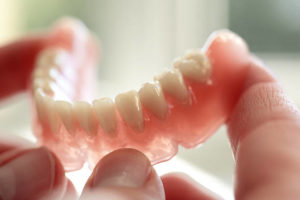 You’ve probably heard about George Washington’s wooden teeth, but it might surprise you to learn that they weren’t made of wood. Instead, they were made of hippopotamus ivory and human and animal teeth that were held together using wire. This wasn’t the earliest form of dentures. Instead, researchers have found evidence of ancient civilizations trying their hands at tooth replacement. Here’s how early dental prosthetics have paved the way for today’s dentures.
You’ve probably heard about George Washington’s wooden teeth, but it might surprise you to learn that they weren’t made of wood. Instead, they were made of hippopotamus ivory and human and animal teeth that were held together using wire. This wasn’t the earliest form of dentures. Instead, researchers have found evidence of ancient civilizations trying their hands at tooth replacement. Here’s how early dental prosthetics have paved the way for today’s dentures.
Ancient Tooth Replacement Methods
Etruscans in 700 BC created false teeth using a similar method as Goerge Washington, but Ancient Mayans used a different approach with carved stones, bones, and seashells. The Mayans would hammer them into jawbones after death. It wasn’t until the 16th century that dentures were made of wood.
Early Dentures
In the 1800s, most people in Europe had lost all their teeth before the age of 50. This led to a high demand for dentures using human teeth. Teeth were extracted from the dead after various battles, including the Battle of Waterloo. As a result, dentures were referred to as “Waterloo teeth.”
The first porcelain dentures were developed in 1774, but they chipped easily and didn’t look natural. In 1820, porcelain teeth were attached to gold plates featuring springs and swivels. This allowed them to work more effectively, creating the first modern denture. Unfortunately, they were quite pricey.
Modern Dentures
Dentures underwent a revolutionary improvement after the invention of vulcanite, a hard rubber. It provided an affordable alternative to gold and could be molded to fit a person’s gums. This was the standard treatment until the 20th century and the development of acrylic resin.
Now, you have several options to treat tooth loss using solutions that look and feel natural, including:
- Partial Dentures: Non-consecutive and consecutive tooth loss can be treated using a partial denture. Prosthetic teeth are attached to a gum-colored base that has a metal framework. This allows it to clip or clasp into place to fill the gaps in your smile.
- Full Denture: A digital impression of your mouth is used to create an acrylic base that rests on top of the gums using suction to stay in place. Porcelain teeth are fabricated to provide stunning results that look natural.
- Dental Implant: A dental implant replaces both the tooth root and the crown. A titanium post is placed into the jawbone to serve as a root, stabilizing a dental crown.
- Implant Dentures: A denture can be anchored to your jawbone using dental implants.
Your dentist will help you choose the best solution to replace your missing teeth. No matter the method, you’ll have a beautiful smile to be proud of.
About Dr. Sumit Chanana
Dr. Chanana earned his dental degree from the Boston University Henry M. Goldman School of Dental Medicine and remains current with the latest developments in dentistry. He can treat the most complex oral health problems, like tooth loss. Request an appointment through his website or call his office at (262) 444-0030.
